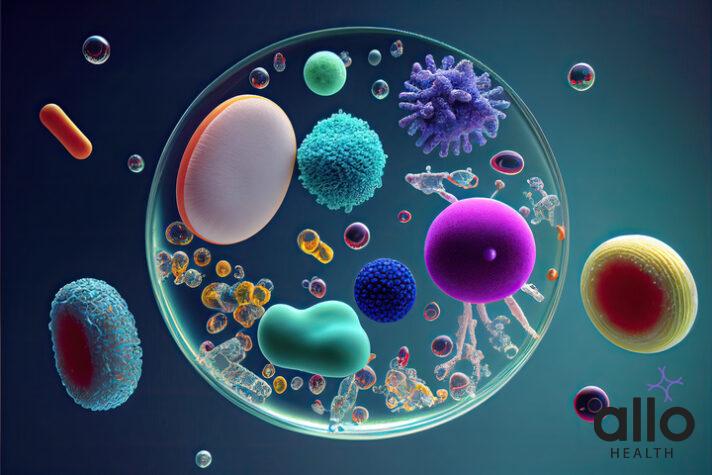What Are The Symptoms And Complications Of Lymphgranuloma Venereum (LGV)?

Allo Health is dedicated to personalized well-being, offering support and trusted information tailored to individual health goals. The platform emphasizes human-generated content, led by a distinguished medical team of experts, including physicians and sexual health specialists. Their commitment to credibility involves rigorous fact-checking, authoritative research, and continuous updates to ensure accurate, up-to-date information. Allo Health's unique approach goes beyond conventional platforms, providing expert-led insights and a continuous commitment to excellence, with user feedback playing a crucial role in shaping the platform's authoritative voice.

Dr Thanushree, has her MBBS from Kanachur Institute of Medical Sciences, Mangalore
Why This Was Upated?
Our experts continually monitor the health and wellness space, and we update our articles when new information became available.
Updated on 26 February, 2025
- Article was updated as part of our commitment to diversity, equity, and inclusion.
"The following blog article provides general information and insights on various topics. However, it is important to note that the information presented is not intended as professional advice in any specific field or area. The content of this blog is for general educational and informational purposes only.
Book consultation
The content should not be interpreted as endorsement, recommendation, or guarantee of any product, service, or information mentioned. Readers are solely responsible for the decisions and actions they take based on the information provided in this blog. It is essential to exercise individual judgment, critical thinking, and personal responsibility when applying or implementing any information or suggestions discussed in the blog."
Lymphogranuloma venereum (LGV) may not be as widely recognized as some other sexually transmitted infections (STIs), but its symptoms and potential complications demand attention. In this comprehensive guide, we delve into the various symptoms and complications associated with LGV, shedding light on this lesser-known yet significant health concern.
Introduction to LGV
Lymphogranuloma venereum (LGV) is a sexually transmitted infection caused by specific serovars (L1, L2, and L3) of the bacterium Chlamydia trachomatis. While LGV shares its microbial origins with the more common chlamydia infection, its distinct characteristics and impact on the body warrant a closer examination of its symptoms and complications.
Symptoms of LGV
- Initial Symptoms:
- LGV often begins with painless, small, and often unnoticed sores or ulcers on the genitals, anus, or surrounding areas. These ulcers, known as primary chancres, can appear one to three weeks after exposure to the bacteria.
- The primary chancres may heal spontaneously, leading individuals to overlook or dismiss them. However, the infection continues to progress internally.
- Secondary Stage:
- As the infection progresses, individuals may experience swelling and inflammation of the lymph nodes in the groin area, known as inguinal lymphadenopathy.
- Swollen lymph nodes may be tender, painful, and significantly enlarged. In severe cases, they may form abscesses or draining fistulas, causing further discomfort and complications.
- Other symptoms in this stage may include fever, chills, fatigue, and general malaise. These systemic symptoms reflect the body’s immune response to the infection.
- Rectal Symptoms:
- In cases of rectal exposure, individuals may experience symptoms such as rectal pain, discharge, or bleeding.
- Rectal ulcers or lesions may develop, contributing to discomfort and complications. These symptoms can mimic those of other rectal conditions, leading to misdiagnosis or delayed treatment.
- Genital Symptoms:
- Genital involvement in LGV may manifest as swelling, pain, or discharge from the affected area.
- In women, symptoms may include vaginal discharge, pelvic pain, and abnormal vaginal bleeding.
- In men, symptoms may include urethral discharge, pain or discomfort during urination, and swelling of the penis or scrotum.
- Rare Symptoms:
- In rare cases, LGV may cause less common symptoms such as skin lesions, joint pain (arthritis), eye inflammation (conjunctivitis), or inflammation of the liver (hepatitis). These symptoms may occur when the infection spreads to other parts of the body beyond the genital and rectal areas.

Complications of LGV
- Chronic Infection:
- Without prompt diagnosis and treatment, LGV can lead to chronic infection and ongoing symptoms.
- Persistent swelling of the lymph nodes and recurrent abscesses may occur, causing long-term discomfort and impairment.
- Scarring and Fibrosis:
- In severe cases, LGV can cause scarring and fibrosis of the genital or rectal tissues.
- Scarring may lead to deformities and functional impairments, affecting sexual and reproductive health.
- Rectal Complications:
- LGV can result in damage to the rectal lining or colon, leading to conditions such as proctitis, proctocolitis, or rectal strictures.
- Chronic inflammation and scarring in the rectal area can cause chronic pain, discomfort, and difficulty with bowel movements.
- Genital Complications:
- Infection of the genital area can lead to scarring and fibrosis, affecting sexual function and fertility.
- In rare cases, severe genital involvement may require surgical intervention to alleviate symptoms and restore function.
- Neurological Complications:
- Although rare, LGV can lead to neurological complications such as meningitis or meningoencephalitis.
- These complications may result from the spread of the infection to the central nervous system and require urgent medical attention.
Diagnosis of LGV
Diagnosing LGV can be challenging due to its varied and nonspecific symptoms. Healthcare providers may conduct a thorough physical examination, review the patient’s medical history, and order laboratory tests to confirm the diagnosis. These tests may include:
- Physical Examination: Healthcare providers may look for signs of ulcers, swelling, or inflammation in the genital and groin area.
- Laboratory Tests: These may include blood tests, tissue samples from affected areas, or nucleic acid amplification tests (NAATs) to detect the presence of the bacteria.
- Imaging Studies: In cases of severe complications or suspected spread to other parts of the body, imaging studies such as ultrasound, CT scans, or MRI may be recommended to evaluate the extent of the infection.
Treatment Options
The treatment of LGV typically involves a course of antibiotics to eradicate the infection. The choice of antibiotic and duration of treatment may vary depending on the severity of the infection, presence of complications, and other factors. Commonly prescribed antibiotics for LGV include:
- Doxycycline: A tetracycline antibiotic often prescribed for a duration of three weeks.
- Azithromycin: A macrolide antibiotic that may be used as an alternative treatment option.
It is crucial for individuals diagnosed with LGV to adhere to their prescribed treatment regimen and complete the full course of antibiotics to ensure the infection is fully eradicated.

Prevention Strategies
Preventing LGV and other STIs involves a multifaceted approach that encompasses education, awareness, and behavioral changes. Key prevention strategies include:
- Safe Sex Practices: Consistently and correctly using condoms during sexual activity can significantly reduce the risk of LGV transmission.
- Regular Testing: Getting tested regularly for STIs, especially if engaging in high-risk sexual behavior or experiencing symptoms, is essential for early detection and treatment.
- Partner Communication: Open and honest communication with sexual partners about STI status, testing history, and safer sex practices can help prevent the spread of infections.
Lymphogranuloma venereum (LGV) presents with a range of symptoms and potential complications that can significantly impact an individual’s health and well-being. Recognizing the symptoms, seeking prompt medical attention, and adhering to prescribed treatment regimens are crucial steps in managing LGV and preventing complications. Through education, awareness, and comprehensive sexual health initiatives, we can work towards reducing the burden of LGV and promoting sexual well-being in our communities.








































